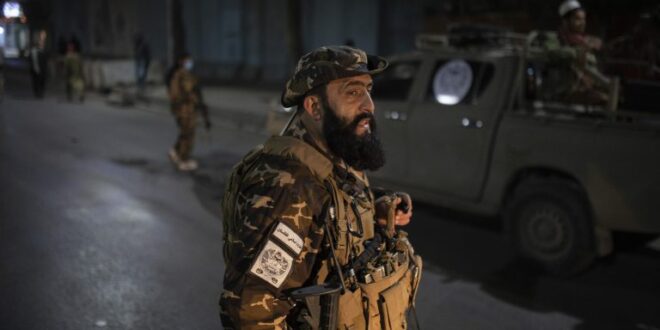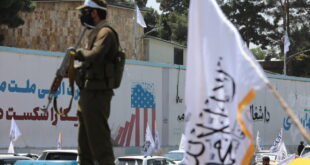There are growing concerns that Islamic State Khorasan (IS-K) could set its sights on targets outside of Afghanistan, launching attacks throughout the region or possibly even in the West.
The recruitment of disenchanted former security force members, coupled with hardened jihadists released from prison, is reminiscent of a pattern that unfolded in Iraq during the early days of the Islamic State insurgency.
An errant U.S. drone strike on August 29 in Afghanistan resulted in the death of ten civilians, including seven children, and is emblematic of the challenges and risks of U.S. counterterrorism operations against IS-K militants with an “over-the-horizon” approach.
It remains to be seen how regional countries will deal with the growing threat of IS-K, but Iran, China, and Russia are each concerned with the metastasizing threat.
As the Islamic State Khorasan (IS-K) continues to wage a bloody insurgency against the de facto Taliban government in Afghanistan, there are growing concerns that IS-K could set its sights on targets elsewhere in the region, or possibly in the West. At a hearing before the Senate Armed Services Committee (SASC) in late October, Undersecretary of Defense for Policy Colin Kahl suggested that IS-K could potentially develop the capability to launch external attacks within the next six to twelve months. The U.S. withdrawal from Afghanistan set off a chain of events that led to a disastrous and haphazard evacuation and the Taliban takeover of the country. In the midst of the chaotic evacuation, IS-K conducted a devastating attack at Hamid Karzai International Airport that killed 13 U.S. servicemembers and at least 170 Afghan civilians. The attack provided IS-K with significant momentum, which it has carried through in its intensifying rivalry with the Taliban. An IS-K attack last week on a Kabul military hospital resulted in numerous casualties. Reportedly among them was the Taliban’s military chief for Kabul, Qari Hamdullah, a senior Haqqani network commander, former shadow governor for Paktika and Khost provinces, and head of the Badri Brigade, the Taliban’s special forces unit.
Some recent reports suggest that former members of the Afghan National Defense and Security Forces (ANDSF) are joining IS-K, either to exact revenge against the Taliban or simply to earn money to survive. The recruitment of disenchanted former security force members, coupled with hardened jihadists released from prison, is reminiscent of a pattern that unfolded in Iraq during the early days of the Islamic State in Iraq and Syria. There has also been a history of defections and side switching in Afghanistan’s serial civil wars and insurgencies, dating back to the anti-Soviet jihad that began more than four decades ago, in 1979. Perhaps concerned that IS-K will successfully recruit more Pakistani jihadists, the Inter-Services Intelligence (ISI) is reportedly working through the Taliban’s Interior Minister, Siraj Haqqani, to mediate an agreement between Tehrik-i-Taliban (TTP) (also known as the Pakistani Taliban) and the Pakistani state.
If IS-K continues to grow its ranks while refining its operational and organizational capabilities, it could very well pose a direct threat to the immediate region and the West. To counter the threat, the United States has touted the effectiveness of what is known as an “over-the-horizon” counterterrorism approach. This means targeting terrorists and insurgents by relying on intelligence that drives operations that, at least in the case of IS-K, result in drone strikes. With no U.S. military presence on the ground, it will become much harder to recruit human sources, forcing a greater reliance on signals intelligence. An errant drone strike on August 29, 2021, in retaliation for the IS-K attack on the airport days earlier, resulted in the death of ten civilians, including seven children. This catastrophe is emblematic of the anticipated challenges and risks of U.S. counterterrorism operations against IS-K militants.
It remains to be seen how regional countries will deal with the growing threat of IS-K. One pillar of IS-K’s strategy, directly related to its objectives of spreading propaganda and recruiting new members, is a campaign to wage brutal sectarian attacks. IS-K has repeatedly targeted Shia Hazara communities, and if this trend continues, it could drag Iran into the conflict through its proxy, the Liwa Fatemiyoun, an Iranian-trained militia comprised of Afghan Hazaras with experience fighting in Syria. China and Russia are also concerned about the growth of IS-K, as well as the growth of other groups like al-Qaeda, particularly as jihadist groups continue to recruit Uighurs and Chechens into their ranks. China recently agreed with Tajikistan on the establishment of a Chinese military base, a clear indication that Beijing is concerned about the growth of extremism throughout Central Asia. While Russia also remains concerned about the revival of jihadist groups in the region, it is perhaps more focused on limiting a U.S. military presence, and Moscow could play a spoiler role as Washington seeks to establish a military base in either Tajikistan or Uzbekistan.
 Eurasia Press & News
Eurasia Press & News



